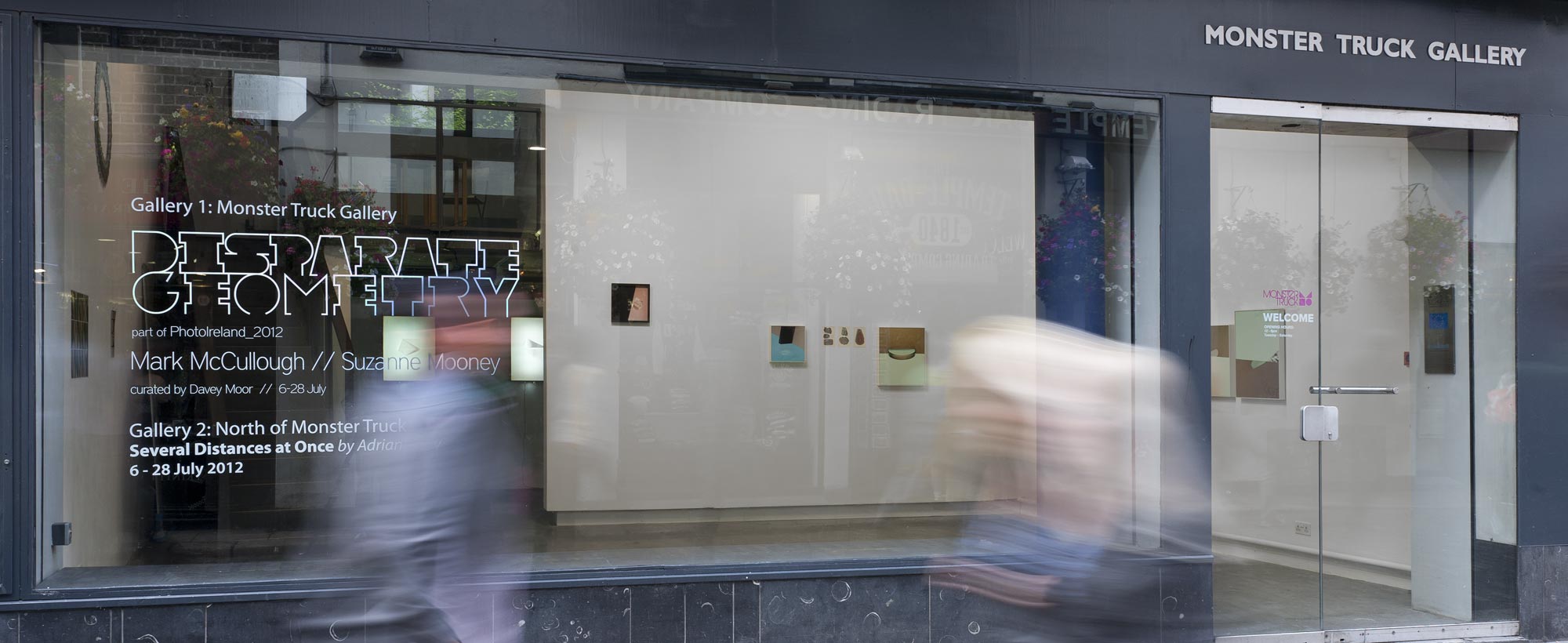
Mark McCullough / Suzanne Mooney /// Monster Truck / part of PhotoIreland Festival // July 2012
While ostensibly ‘abstract’, the work of both Suzanne Mooney and Mark McCullough challenge the label’s typical detachment from reality. Both rely on the actuality of that presented to illustrate both the things within as well as the ideas surrounding them, producing conceptual, lens-based works, appreciably concerned with ideas of representation.
Victor Burgin remarked, when discussing the idea of photographic representation, that as a textual medium, photography’s subject/object relationship is so familiar that it invariably bypasses considered decoding, provoking an automatically passive reading. This natural path-of-least-resistance reaction can prevent a critical opening up of textual possibilities and alternatives. Such instantaneous analysis is slowed to a more conscious meditation when one is presented with abstract photographic imagery, such as ‘What is it?’ puzzle photographs. These images state the existence of a factual description, but inspire a myriad of possibilities by arresting presumption. Appreciation of such dislocation in fine art however does not necessarily depend on answers. In works where it is made explicit, or merely hinted at by title or text, there can be a separation in the stages of experience, where representation is revealed. In Disparate Geometry, there are such avenues of possibility for the curious.
Mark McCullough combines motifs and visual phrases from draughtsmanship and geometry to provide an alternation between design and result. A mutually beneficial relationship between sculpture and photography exists within his practice. His 5 Photographs lightboxes, in the back room, are relatively straightforward adumbrations of his own abstract models. These sculptures however, are painstakingly plotted mappings of part of the airspace between the lens and the titular object. In the resulting photographs, the delineative properties of the photographed objects fades the moment of their three-dimensional origins, using only a faint suggestion of depth to delicately convey ideas of space and vision, without overly burdening them with physicality. The constituent images in his series of untitled montages presented here in the front gallery are of fluorescent lights, shot with an iPhone camera, unmanipulated. Fingertips are another staple of this project, where rather than being deleted as dead-end mishaps, they are conversely riffed on in geometric montages, usually hinting at the ocular {eyes, windows, frames, diaphragms, shutters}.
Taking pre-existing materials and collapsing them visually upon themselves, Suzanne Mooney unsettles dimensional pre-conceptions. Her work situates itself in an arena where the fetishisation of objects occurs; her visual props are raw display systems – the functional, professional materials used in retail environments to draw attention not to themselves, but to the products they support and surround. The use of generic raw material for such displays is succinctly captured in the overarching title of this series since 2010, Equilateral Coercion. Desire for ‘things’ rarely develops in a vacuum, being stage-managed in environments calculated by the marketeer. Their actuality is presented with such clinical splendour, uncertainty of scale and deft economy of tonal contrast – as to provoke disbelief in their tangibility. However, Mooney does not use digital manipulation. Synthesis is suggested, but not designedly, and the images are only masqueraded as riddles within the terms of there own existence.


